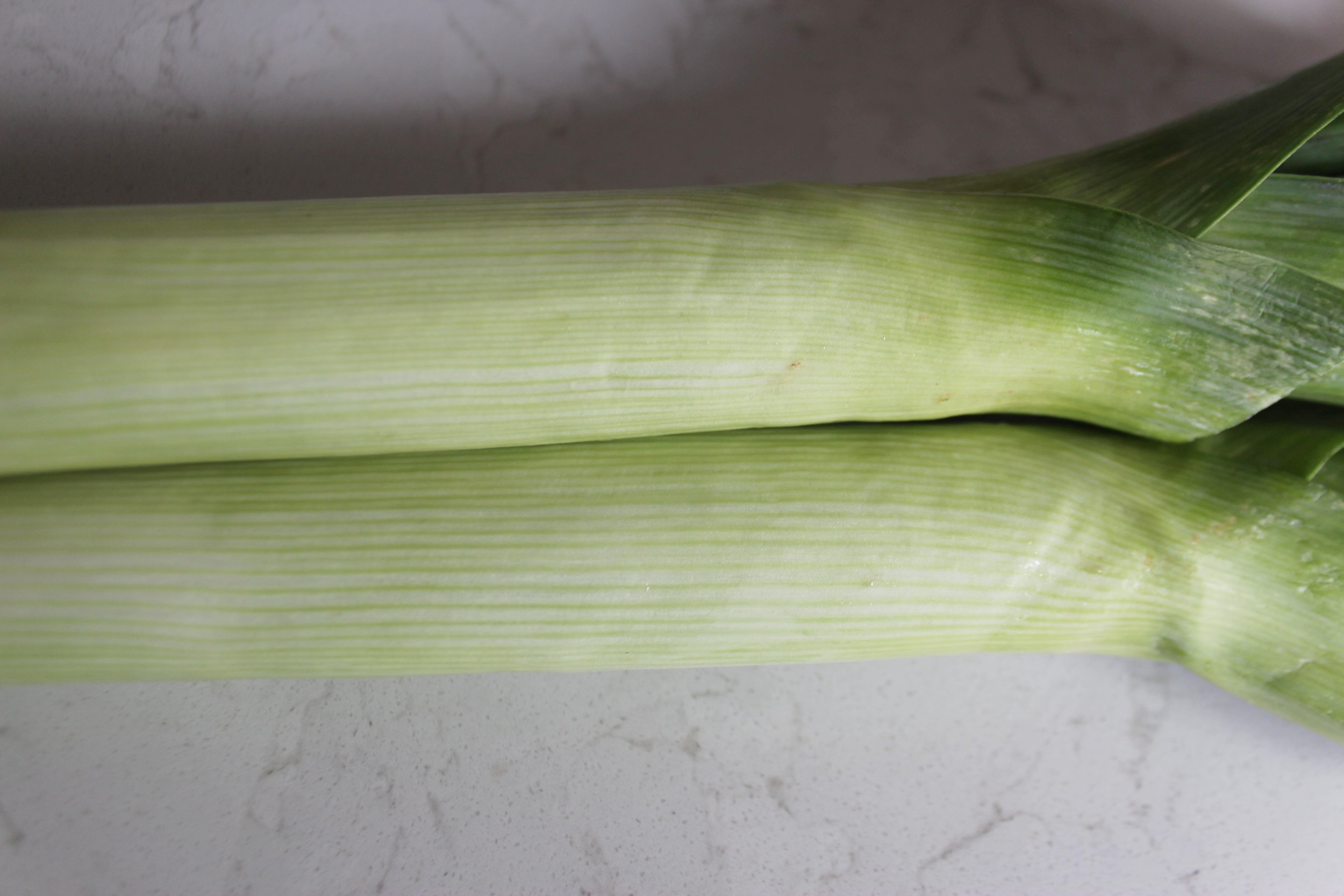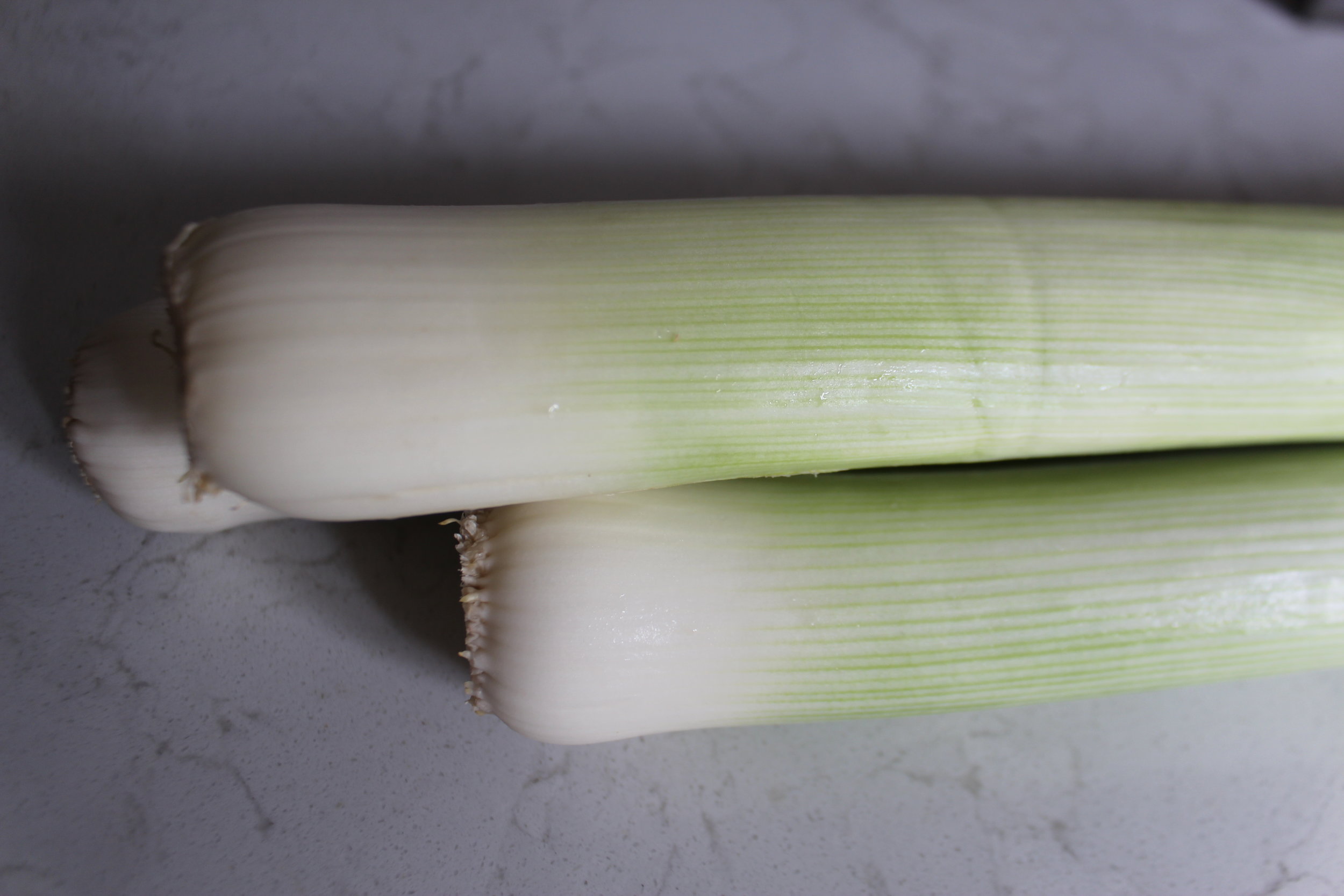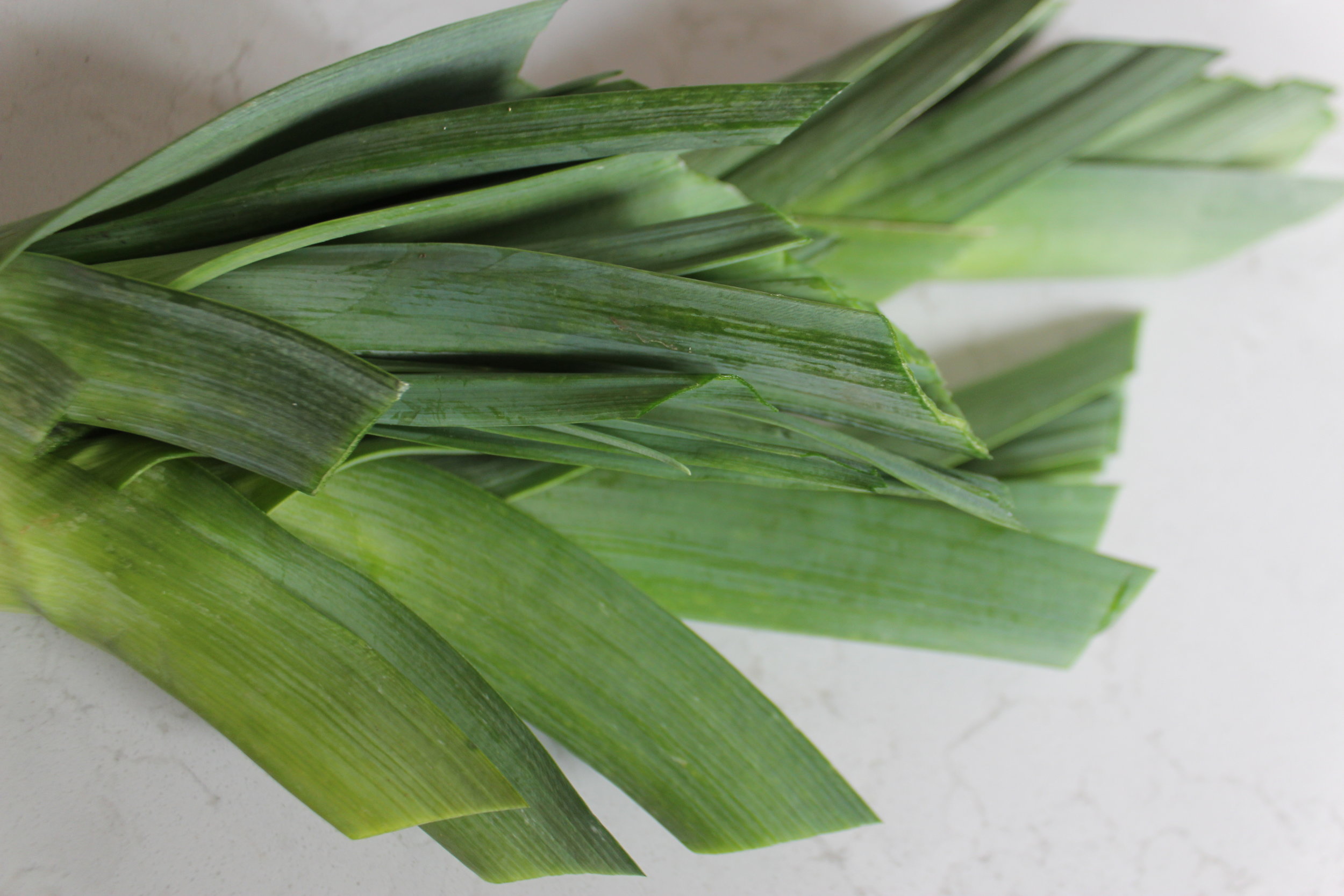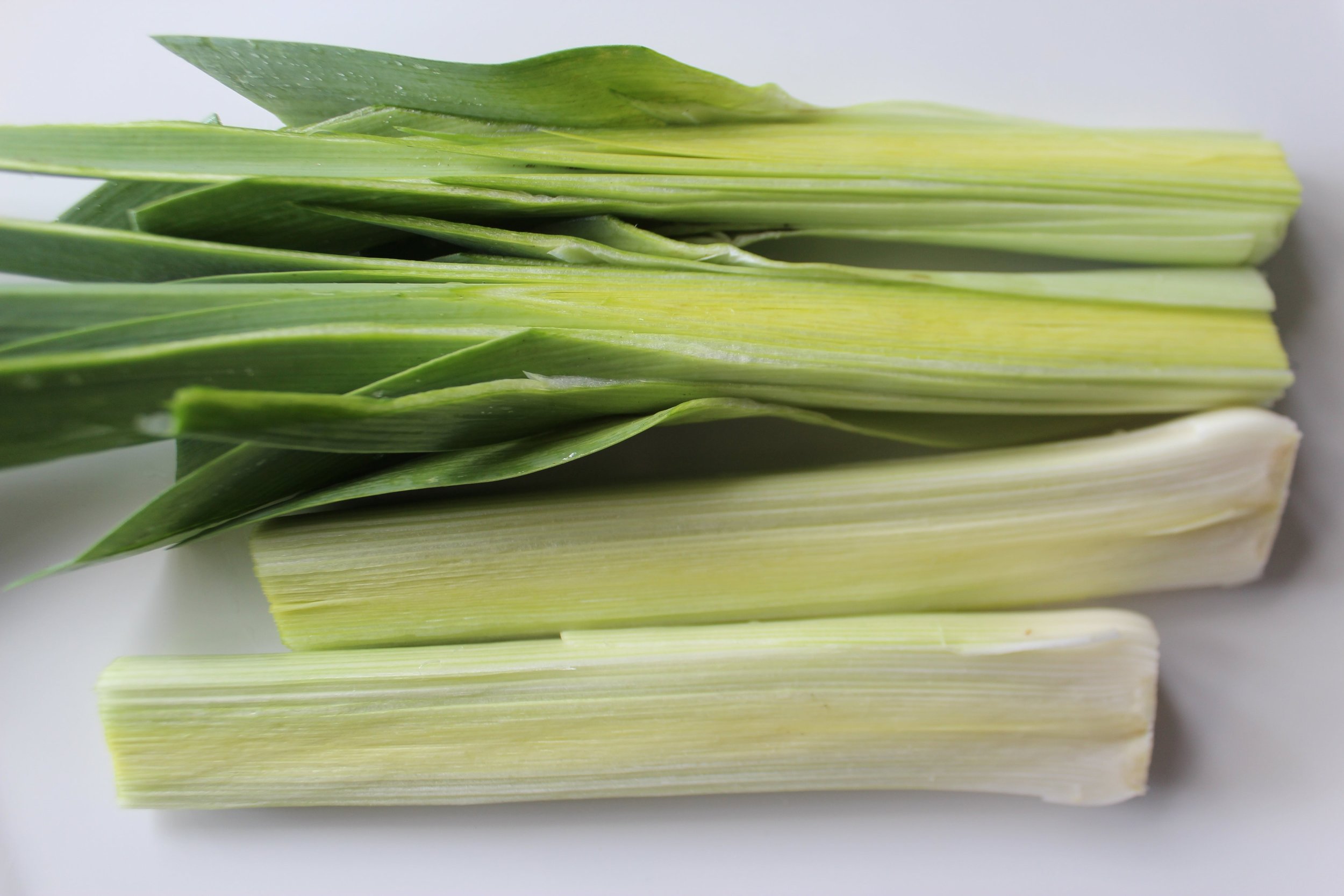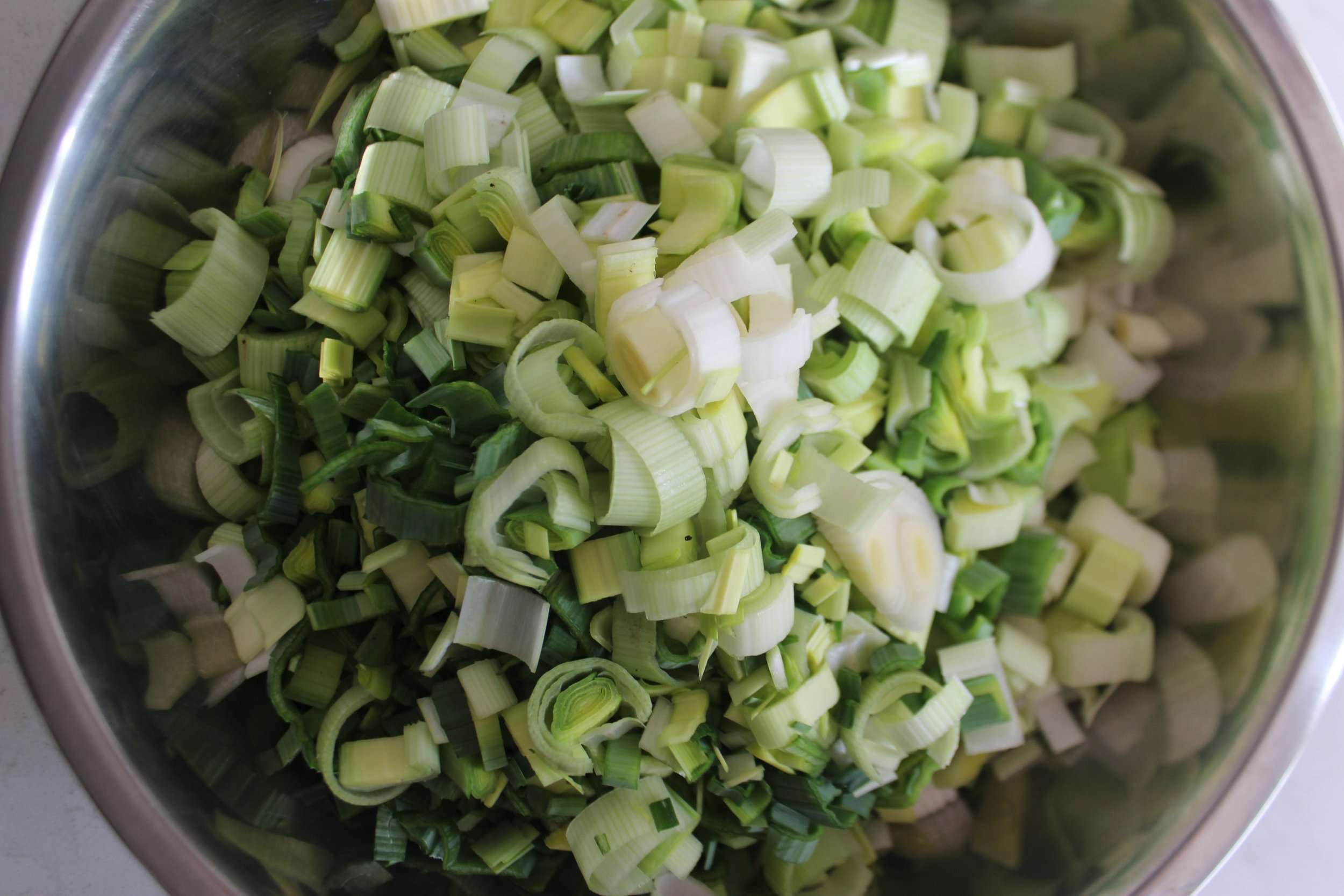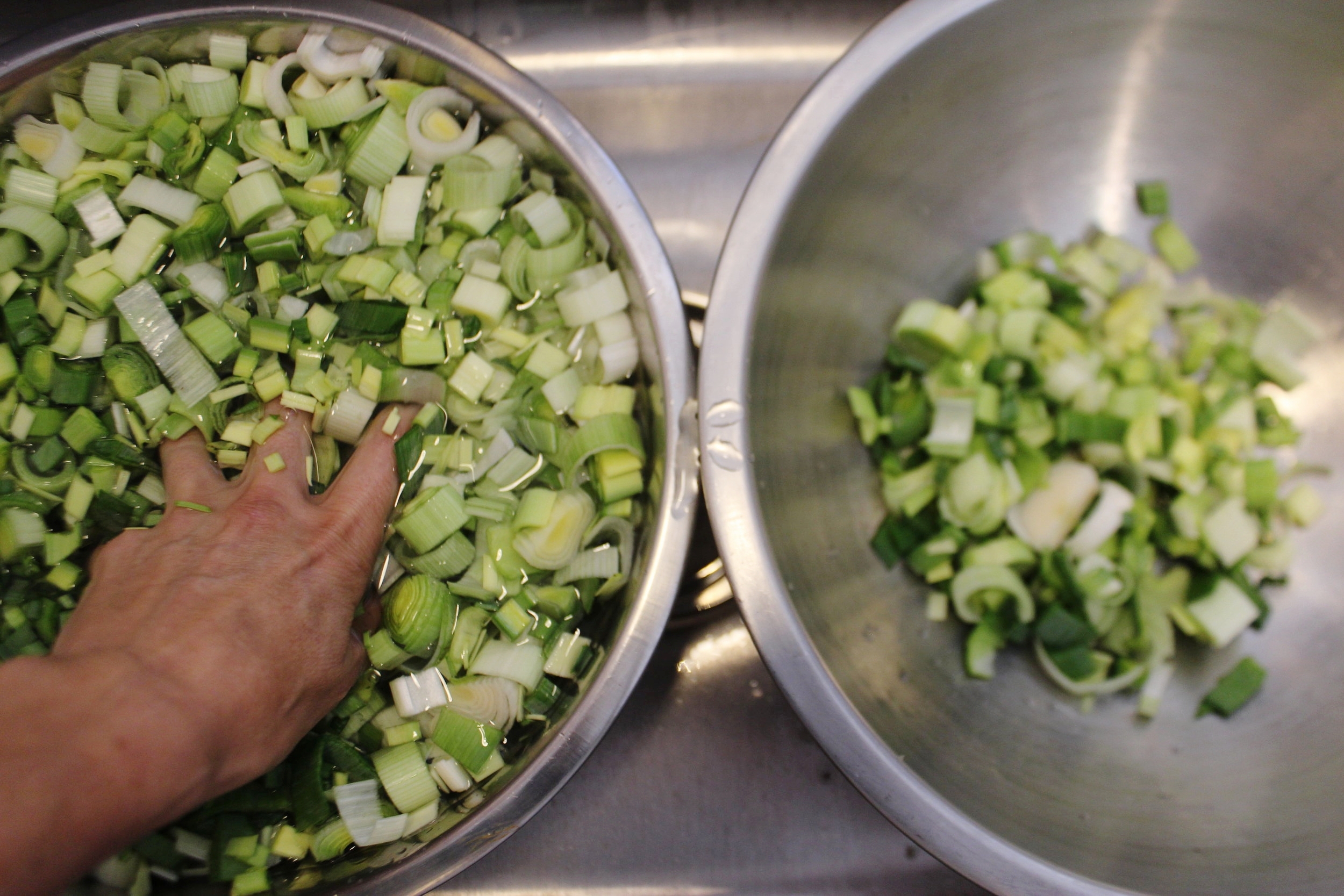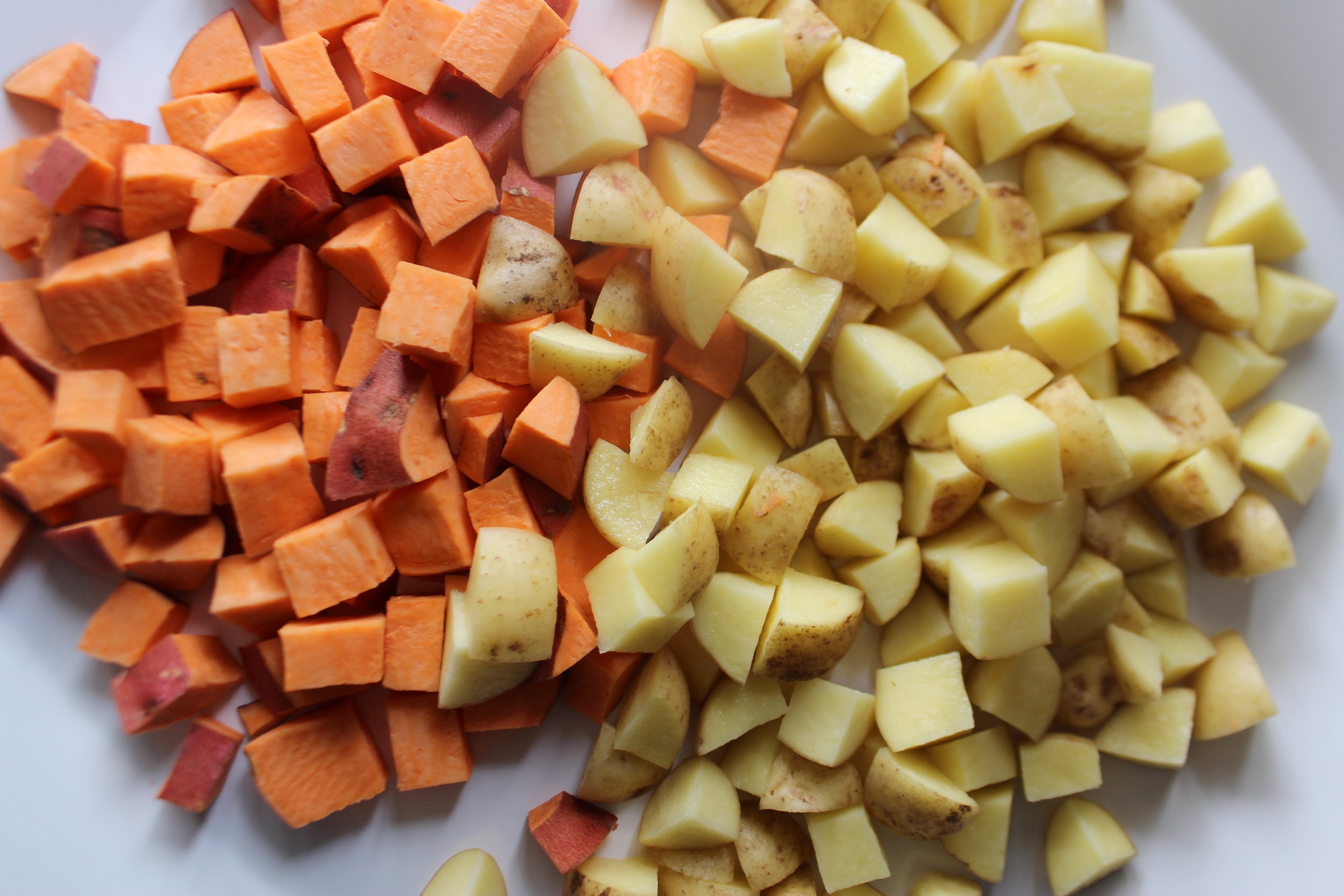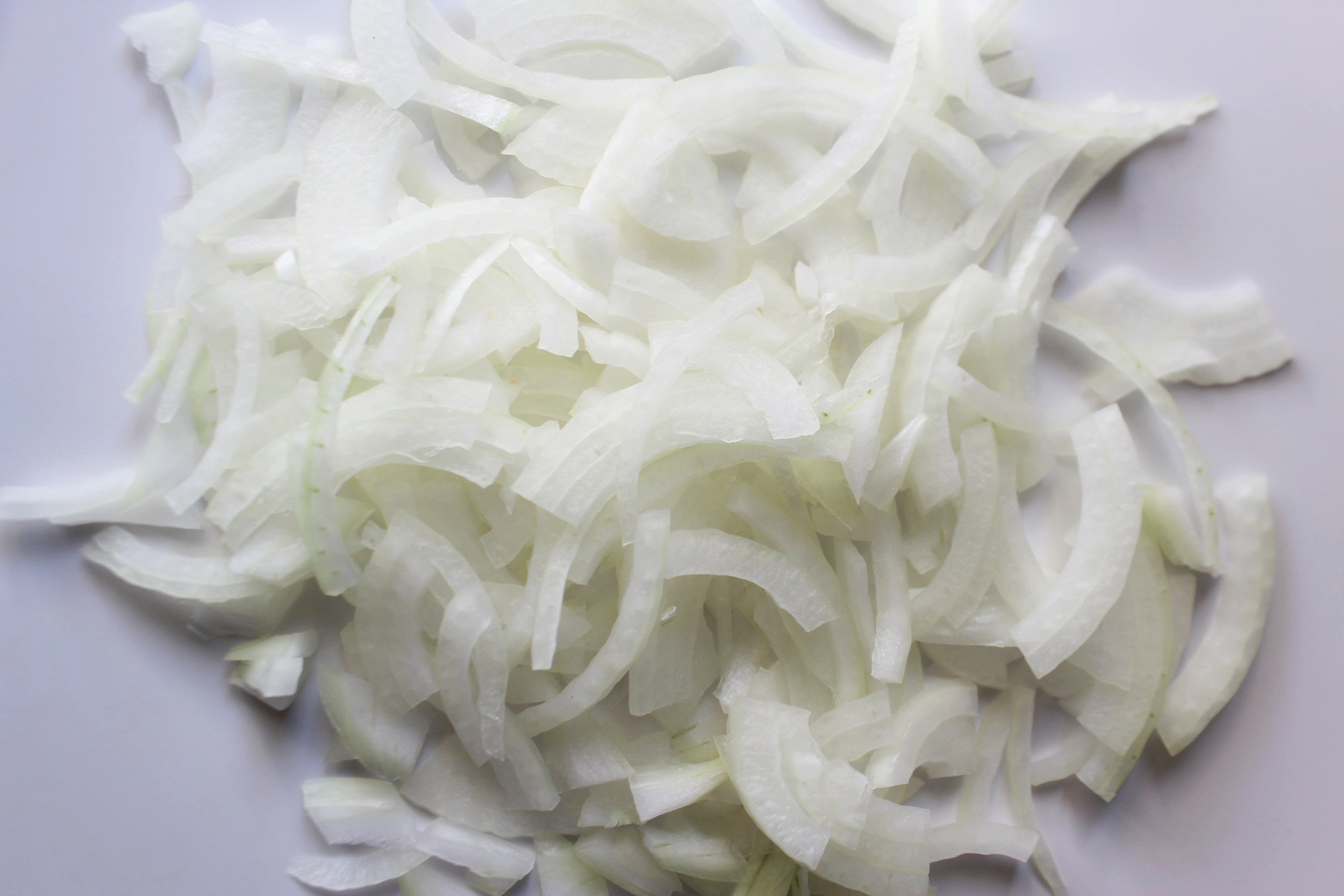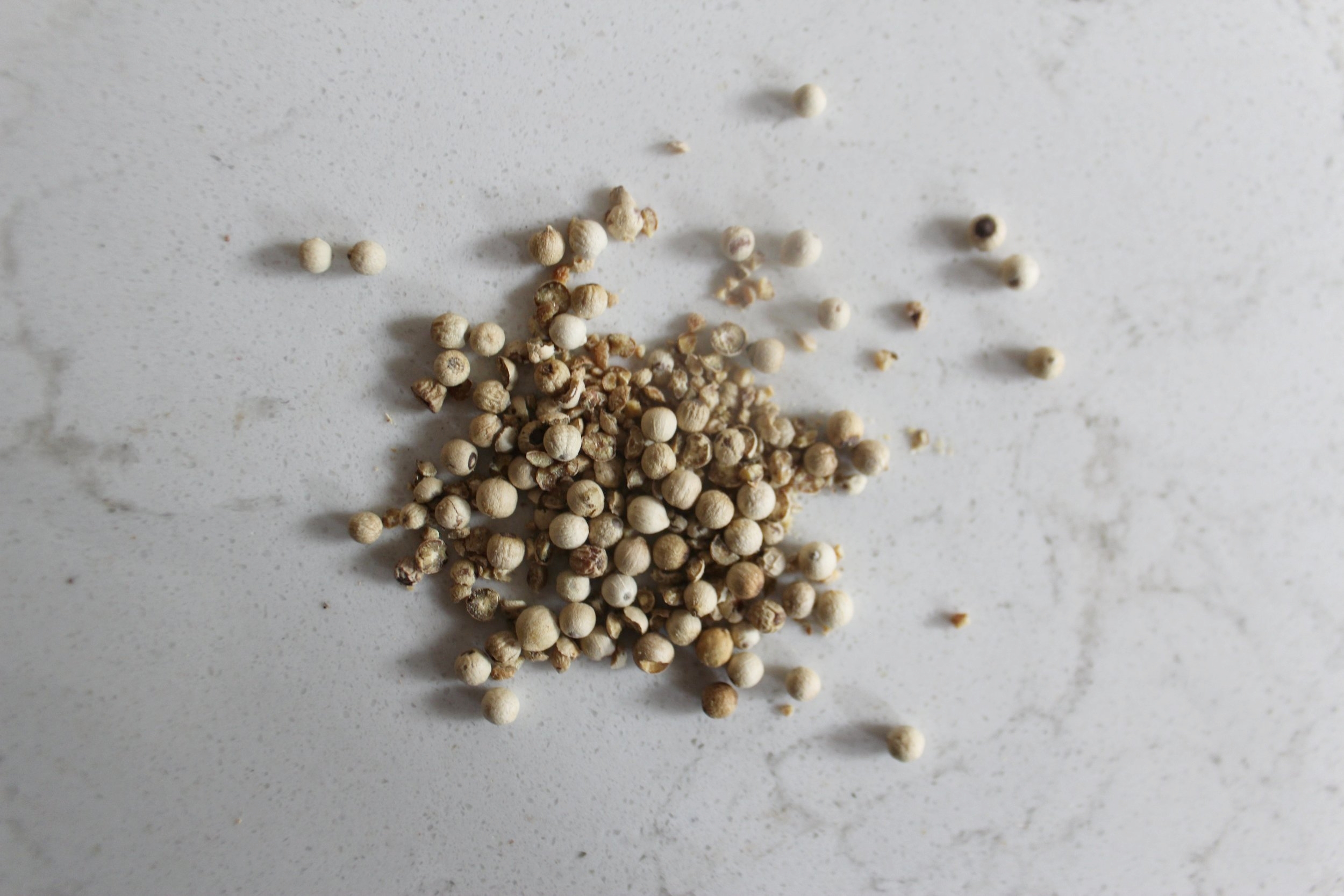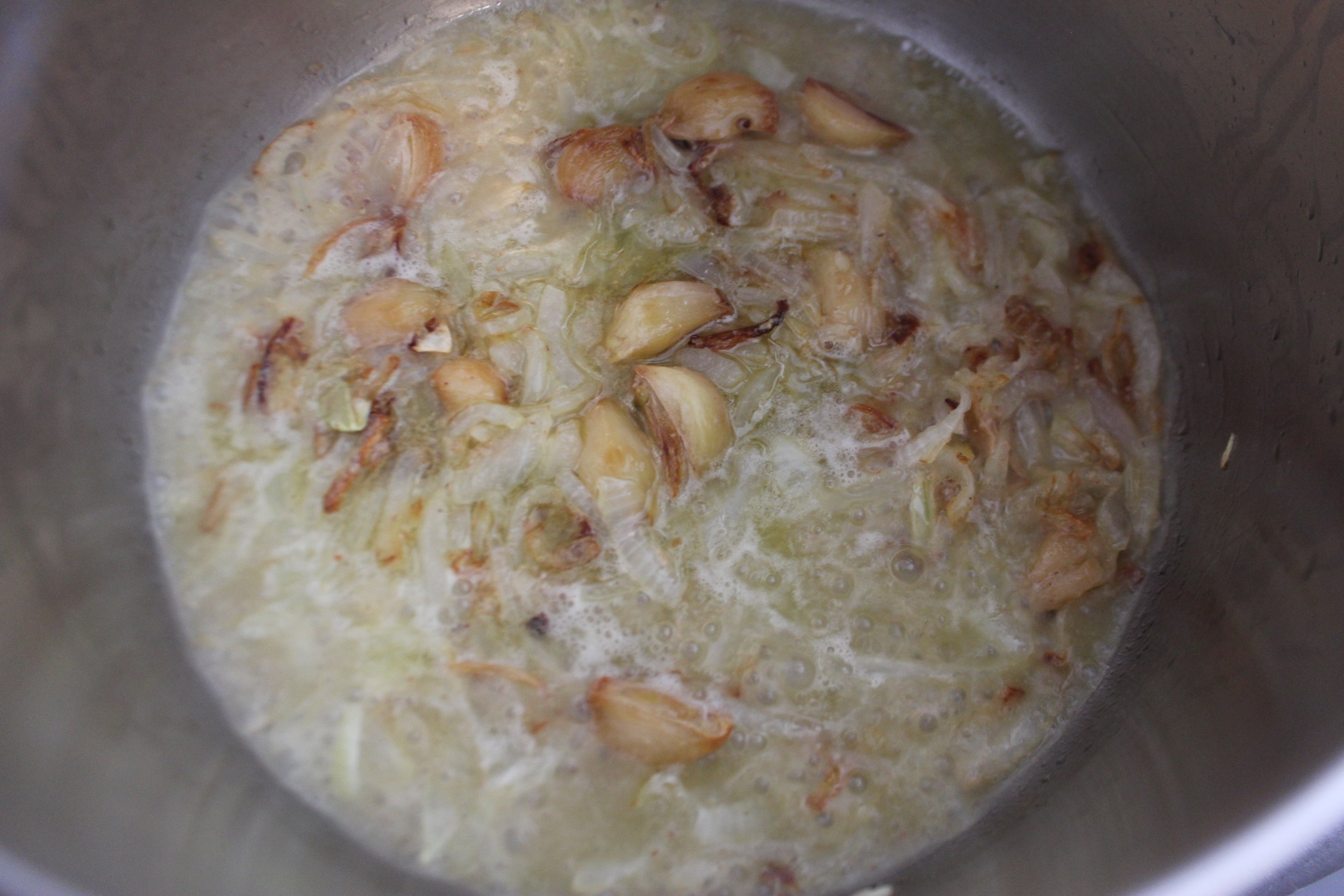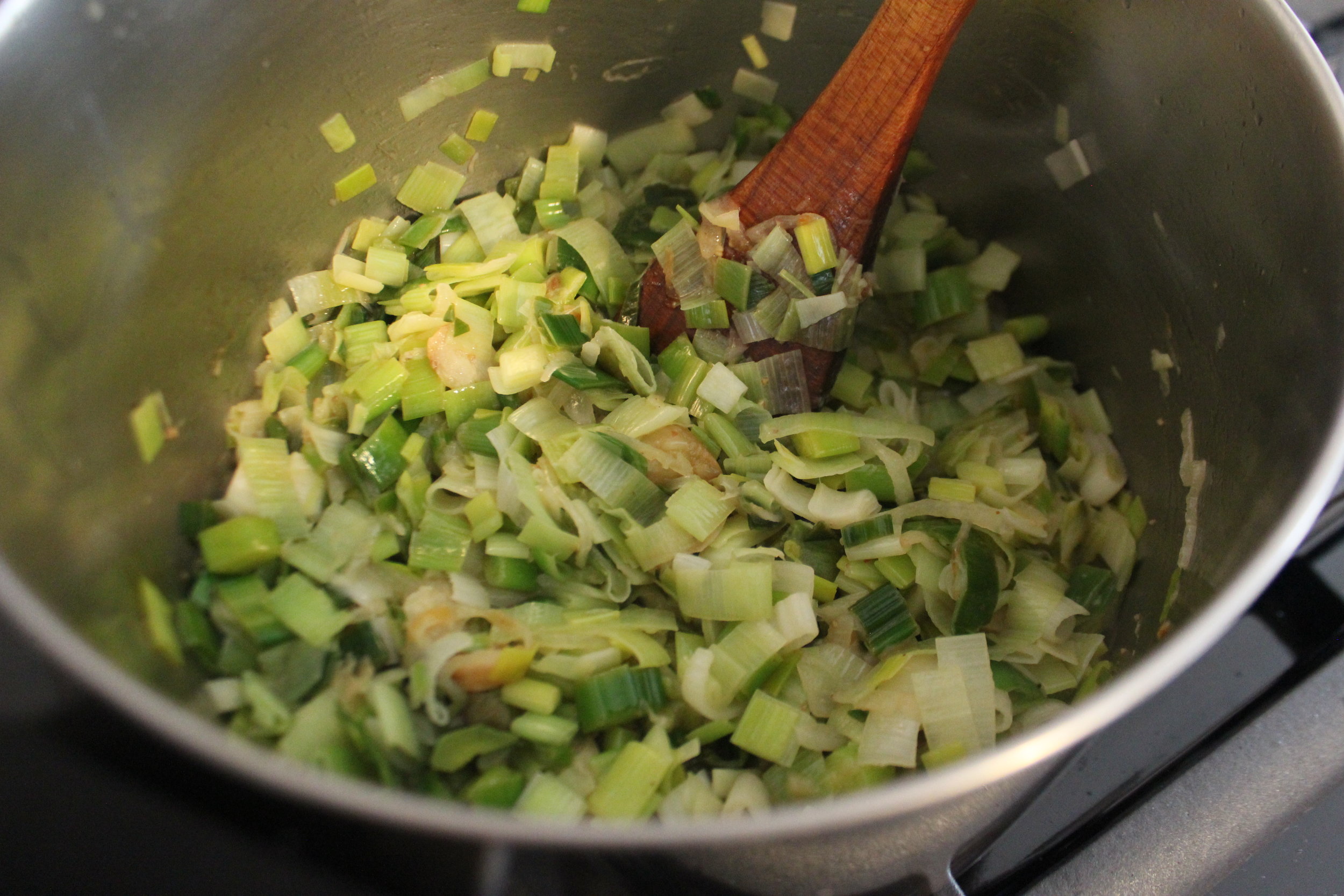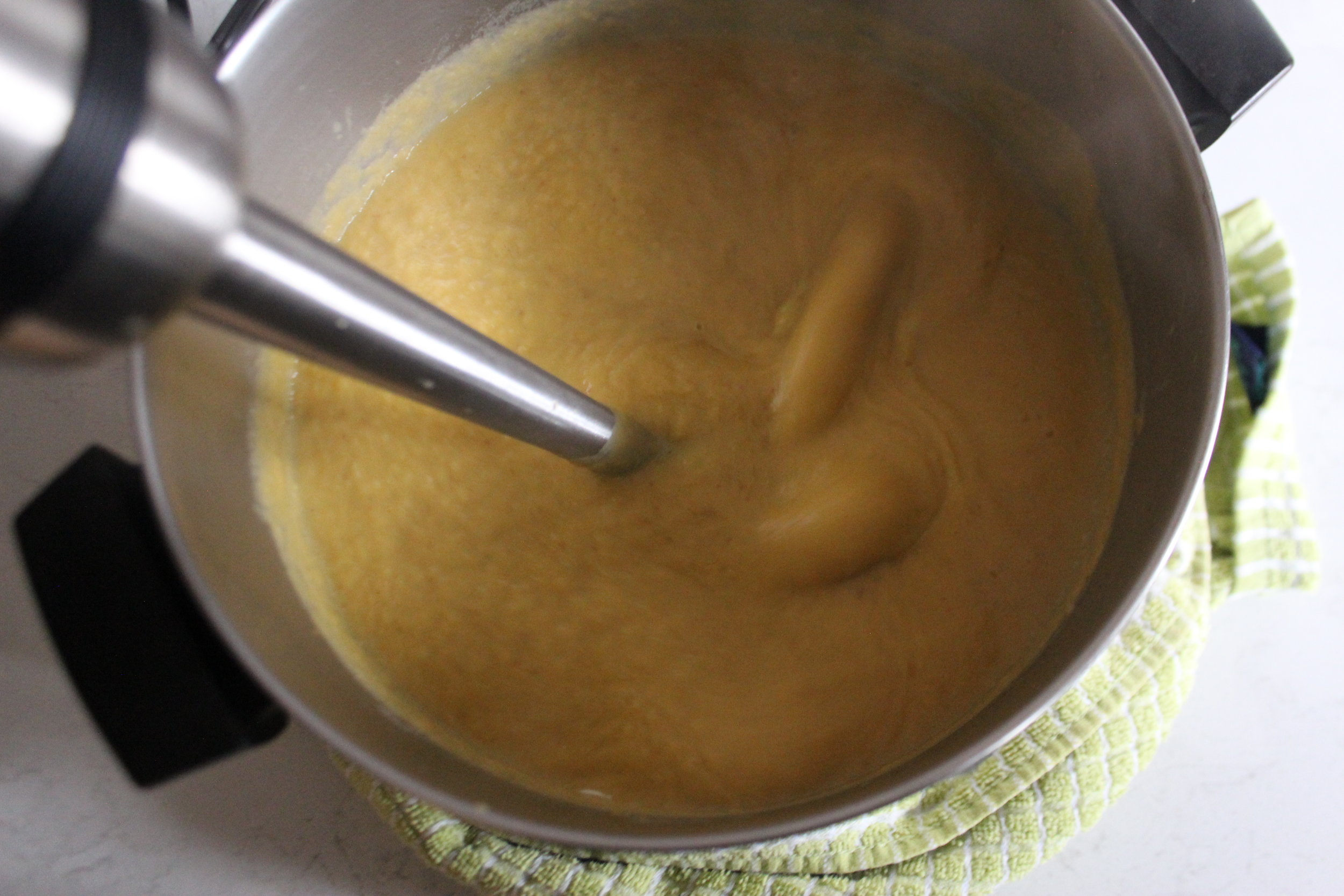Jen's Sweet Potato Leek Soup with White Pepper and Garlic Oil
Here it is Jen! A little jazzed up. I hope you approve.
When I lived in Washington D.C., I had many cherished clients who I enjoyed cooking for immensely. In one of these homes there reigned a small fleet of outstanding nannies. Despite very low odds, two things happened to bring one of these amazing ladies, Jen, back into my life a couple of years later. She met a great guy (yay!), moved down to Fort Worth and started a family, and my family moved first to Arizona, then to Dallas TX. What are the odds? Obviously greater than zero.
We were thrilled to be able to get our kids together regularly, who differ in age by two years but turned out to be great buddies. It was such a relief to me to have a ready-made friend for both myself and my son when we landed in Texas, which felt more than a little foreign to me. I had always wanted more time to hang out with this amazing woman who can tame a difficult phone representative with calm and reason no mere mortal poseses, stop a speeding sippy cup with lightening fast reflexes, and take huge leaps of faith in a single bound.
I was so honored to be able to bring a few requests for her fridge after she gave birth to her second adorable child. Potato leek soup was one request. I think I made it even better Jen! You let me know. For the rest of you. I think y'all will enjoy it.
Let's talk leeks. Leeks are beautiful, mild, cool-hearty onions that can grow to great heights. Those pictured above were two feet long, majestic vegetables. They are very economical as well at $3 for three mega-leeks at my farmers market. They can also be intimidating. Here is how to trim, wash, and use every last bit of these beautiful alliums (a.k.a members of the onion family).
First I would like to dispel any thoughts about only being able to use the whites of leeks or needing to toss out any part whatsoever. Let's start at the bottom. The little root part should be cut off, rinsed well to remove as much sand/dirt as you can and tossed in a bag for stock. The outer layers from the bottom of the light part to the top of the green part can all be used depending on the state they are in. Just as with other onions, there is often a leathery outer layer or layers. Peel back or clip away any layers and parts that feel leathery, dry or have browned parts on them. Wash these and also save for stock, with the exception of rotted parts.
Now you are left with the the parts fit for cooking. As the green parts often require longer cooking, especially the very tops, it is helpful to cut them very thin. You may do this and use them in the same recipe with the whites or wash them separately and use them in a different recipe. I used the whole darn leek here as even the green parts were fairly tender. I did, however, slice the green parts finer than the white. Depending on the recipe you are making, you may be instructed to only use the white. If the recipe is blended or you want to try including the greens by cutting them very thin to help their softening, try it out! This works very well for leek tarts or galettes for example.
Next for the washing and prepping. In this recipe you will cut the leeks into half moon shapes by slicing them in half top to bottom then cutting them evenly across the width. This produces pieces that come apart, allowing sand and dirt to fall away in the washing process. The washing method is simple. In the sink, place the cut leeks in a large bowl, making sure that the bowl is big enough to allow the leeks to float a bit when filled with water. Have a second bowl of equal size next to it. Fill the leek bowl with water and gently shake the leeks and massage them to make the layers come apart as best you can. When you have gone through that first bowl, scoop the leeks out of the water, allowing them to drain, and place them a handful at a time in the second bowl. When the second bowl is full, fill it with water and repeat. Do this until the water at the bottom of the bowl is clean and free of sand. Usually this takes three or four washes, but do it as many times as it takes. When they are clean, drain them of excess water.
There is no downside to cleaning too many leeks. If you are going to go to the trouble of doing it, make extra and use them later in the week.
The bulk of the leeks in this soup gives it a lighter body than many fall and winter stews and soups. The addition of poached garlic and its resulting oil as a finishing flavor adds a sweet, rich garlic note that will win points with garlic lovers as well. Poaching garlic is something everyone should do on a regular basis. It is so easy and the golden, butter-soft cloves and flavor packed garlic steeped oil are items that have many uses.
A small, heavy bottomed sauce or cast iron pan are perfect for oil poaching. If you don't have a pan 6 inches in diameter or less, search a few second hand stores and garage sales or put some feelers out for anybody looking to lighten up their kitchen. Grandma's are a good source of cast iron pans! Try to use large cloves of a similar size or cut them to match. Larger pieces are ideal because they don't brown as quickly. Use plenty of extra virgin olive oil to ensure the garlic is submerged. I poach 8 or 10 large cloves at the very least, and 1/2 C of oil at once. The lowest and slowest flame is best to get a soft buttery texture.
If you keep poached garlic on hand you can blend it into dips, spread or drizzle on bread or pasta, make vinaigrette, blend with nuts and herbs to make pesto, or blend the garlic and the oil together to make a smooth garlic puree. Your breath is going to be great.
You may substitute black pepper for white pepper in this recipe if you like, but I chose white peppercorns for their slightly milder and unique flavor. I temper them a little by adding them during the cooking process, but you may also grind the pepper into the soup at the end or even grind some fresh when adding the garlic oil. White peppercorns are simply black pepper with the outer layer removed. I also left my pepper ground slightly larger as I enjoy getting a nice peppery bite now and then. Grind finer if you prefer it more integrated.
When your onions are lovely, soft and melting, begin building the soup.
Reduce the wine, soften the leeks, add potatoes and liquid, blend and drizzle with garlic oil. Then sit and enjoy a hot bowl on a cold and windy day.
Jen's Sweet Potato Leek Soup with White Pepper and Garlic Oil
Ingredients:
- 8 C leeks, half moon cut and cleaned
- 2 1/2 C sweet potato, medium dice
- 2 1/2 C yukon gold potato, medium dice (or any non-waxy, thin skinned yellow-white potato)
- 1/2 large white or brown onion, thinly sliced
- 8 large garlic cloves
- 1/2 C extra virgin olive oil (or more)
- 1/2 Tsp ground white pepper
- 1 Tsp Dijon mustard
- 1/2 C white wine
- 5 C water or stock
- 1 1/2 to 2 Tsp sea salt (to taste)
- 2 Tbsp sherry, rice, or white wine vinegar
*NOTE: I bought three very large leeks and cleaned them all. I had about 4 cups leftover for later in the week. They were 1 inch thick and about 2 feet long! Buy enough leeks so you are secure in having 8 cups. I recommend making the whole recipe as it freezes well.
Begin by washing the outside of the leeks, peeling off any leathery or dry layers, and cutting off any browned or degrading parts from the top. Remove the very bottom root part and slice the leeks in half from top to bottom. Lay the leek flat and cut 1/2 inch pieces of the lighter parts and thinner pieces as you move to the green parts. Go ahead and slice the green top very thin if you are concerned about it not softening enough. The soup will be blended anyway.
Wash and dice the potatoes by cutting them into 1/2 inch rounds and then 1/2 inch cubes approximately. Slice the onion in half and then slice it very thin any way you like. Peel 8 large cloves of garlic and place them in a small, heavy bottomed pan with the olive oil. Add more olive oil to cover the cloves or cut the cloves in half to make sure they are submerged. Heat the oil and garlic on the lowest setting, watching carefully that the cloves do not become too brown. If the garlic is cooking too fast, remove the pan from the heat periodically. When the cloves are a golden color and as soft as butter when poked with a paring knife, remove them from the oil to a small cup and remove the pan from the heat.
In a large soup pot, combine 3 Tbsp of the garlic oil with the sliced onion and saute over low to medium heat until the onion is completely soft and beginning to brown on the edges. Add the garlic, white pepper, and Dijon mustard to the pot and stir together. Add the white wine and allow it to reduce by half over medium heat. Now add the leeks and stir them occasionally until they are softened. Add the potatoes and stock or water and bring the pot up to a low boil. Reduce to a simmer and partly cover the pot.
Allow the potatoes to simmer until they are completely soft through. Remove the soup from the heat and blend with an immersion blender or in batches in a blender until smooth. The fiber from the leek tops may leave a slightly bumpy appearance in the soup but it will have an enjoyable texture. I advise including the tops for nutrition and fiber content.
Serve each portion with about 1 Tsp of garlic oil drizzled over it. Enjoy!
Yield: 9 C total/ 8 heaping 1 C servings.


